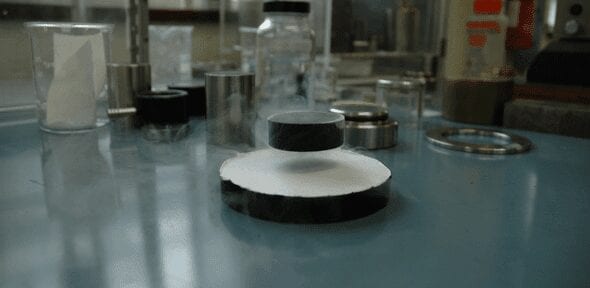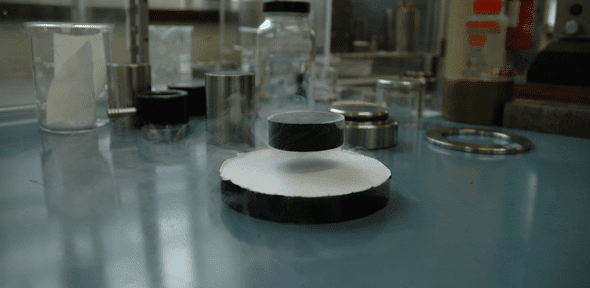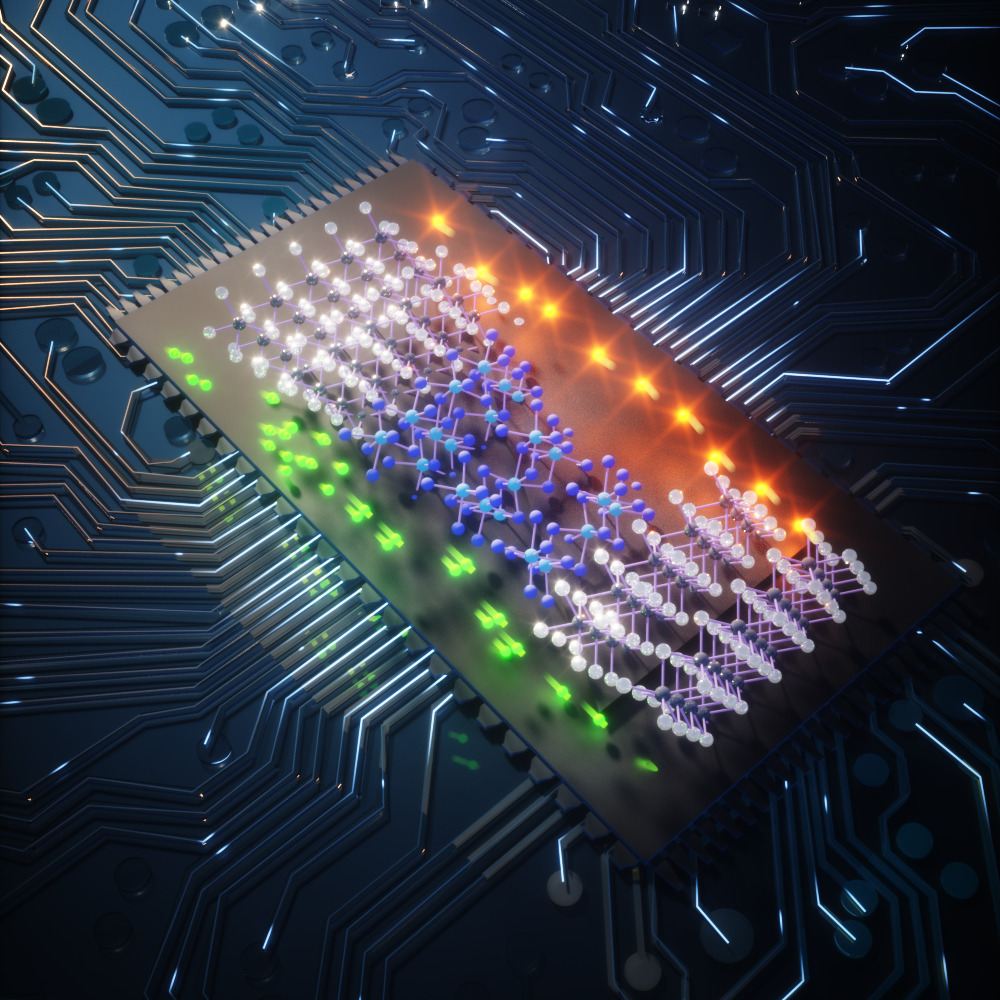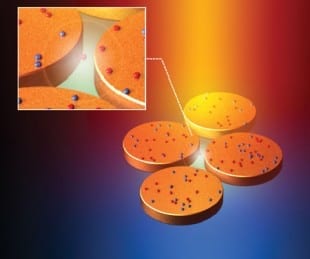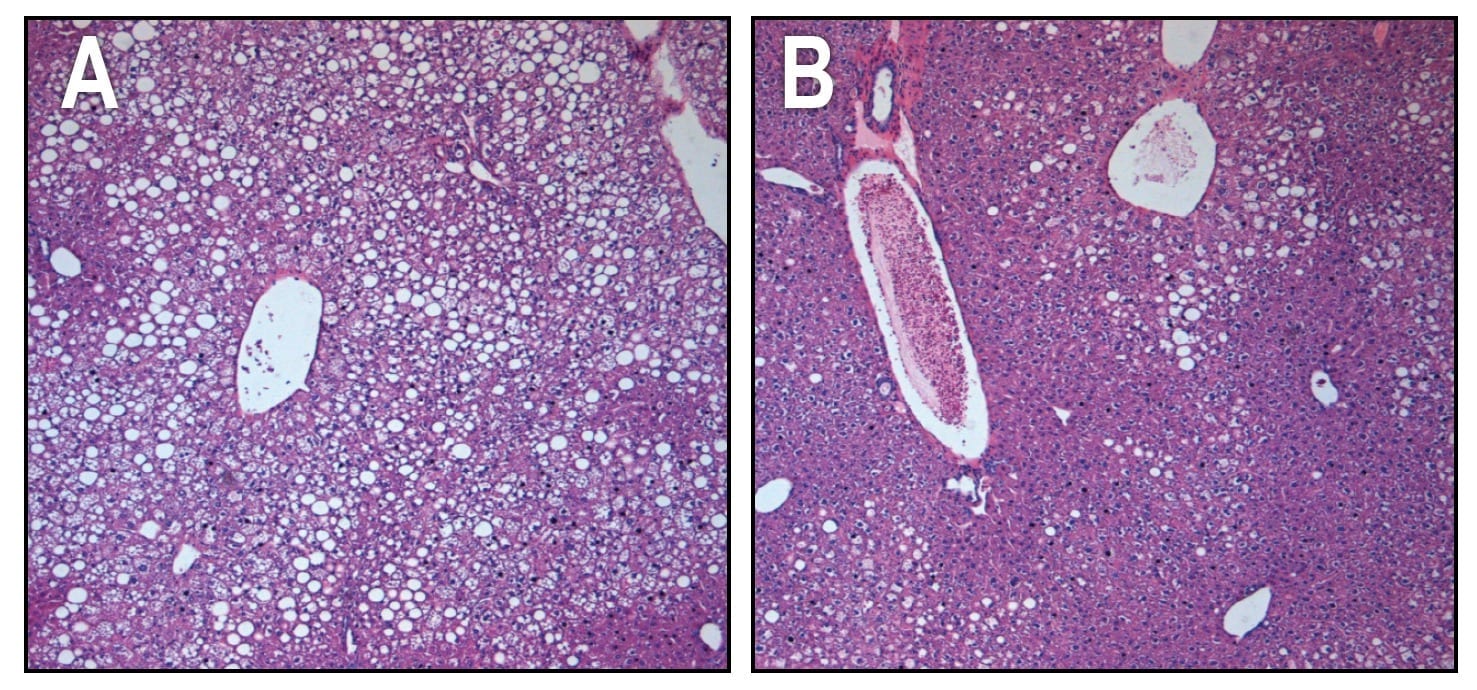The research demonstrates the potential of high-temperature superconductors for applications in a range of fields, including flywheels for energy storage, ‘magnetic separators’, which can be used in mineral refinement and pollution control, and in high-speed levitating monorail trains.
New record for a trapped field in a superconductor, beating a record that has stood for more than a decade, could herald the arrival of materials in a broad range of fields.
A world record that has stood for more than a decade has been broken by a team led by University of Cambridge engineers, harnessing the equivalent of three tonnes of force inside a golf ball-sized sample of material that is normally as brittle as fine china.
The Cambridge researchers managed to ‘trap’ a magnetic field with a strength of 17.6 Tesla – roughly 100 times stronger than the field generated by a typical fridge magnet – in a high temperature gadolinium barium copper oxide (GdBCO) superconductor, beating the previous record by 0.4 Tesla. The results are published today in the journal Superconductor Science and Technology.
The Latest on: High-temperature superconductors
[google_news title=”” keyword=”High-temperature superconductors” num_posts=”10″ blurb_length=”0″ show_thumb=”left”]
via Google News
The Latest on: High-temperature superconductors
- Significant advancement in superconductivity research at oxide interfaces by USTCon May 13, 2024 at 12:48 pm
The research team led by Academician CHEN Xianhui and Professor XIANG Ziji from the CAS Key Laboratory of Strongly-Coupled Quantum Matter Physics and Department of Physics, University of Science and ...
- Quantum Mystery Solved – Scientists Shed Light on Perplexing High-Temperature Superconductorson May 13, 2024 at 5:28 am
Flatiron Institute senior research scientist Shiwei Zhang and his team have utilized the Hubbard model to computationally re-create key features of the superconductivity in materials called cuprates ...
- How cuprate superconductors might workon May 13, 2024 at 2:41 am
Diagonal hopping by electrons explains superconductivity in cuprate 'high-temperature' superconductors, according to researchers associated with the ...
- Quantum breakthrough sheds light on perplexing high-temperature superconductorson May 9, 2024 at 12:07 pm
Superfast levitating trains, long-range lossless power transmission, faster MRI machines—all these fantastical technological advances could be in our grasp if we could just make a material that ...
- Will Better Superconductors Transform the World?on May 9, 2024 at 6:04 am
Scientists are pursuing materials that can conduct electricity with perfect efficiency under ambient conditions. In this episode, the physicist Siddharth Shanker Saxena tells co-host Janna Levin about ...
- Why we are finally within reach of a room-temperature superconductoron May 7, 2024 at 8:00 am
A practical superconductor would transform the efficiency of electronics. After decades of hunting, several key breakthroughs are inching us very close to this coveted prize ...
- University of Houston Hydride Research Expands Boundaries of Practical Superconductivityon May 4, 2024 at 5:25 am
Science is taking a huge step forward in the quest for superconductors that will not require ultra-high pressure to function thanks to multinational research led by Xiaojia Chen at the University of ...
- Hydride research pushes frontiers of practical, accessible superconductivityon April 29, 2024 at 9:02 am
Science is taking a step forward in the quest for superconductors that will not require ultra-high pressure to function, thanks to multinational research led by Xiaojia Chen at the University of ...
- UPDATE: SCTL Retracts Levitation Claim for PCPOSOS Room Temperature Superconductoron April 24, 2024 at 12:32 pm
A room temperature superconductor is VERY hard work ... he is currently a Co-Founder of a startup and fundraiser for high potential early-stage companies. He is the Head of Research for Allocations ...
- High Temperature Superconductors, Inc. Powers Up: $5M ARPA-E Program Work Beginson April 23, 2024 at 3:00 am
HTSI’s expertise and ACT’s innovative technologies will join forces to foster accelerated advancements in the field of high-temperature superconductor cables for a wide array of applications ...
via Bing News








